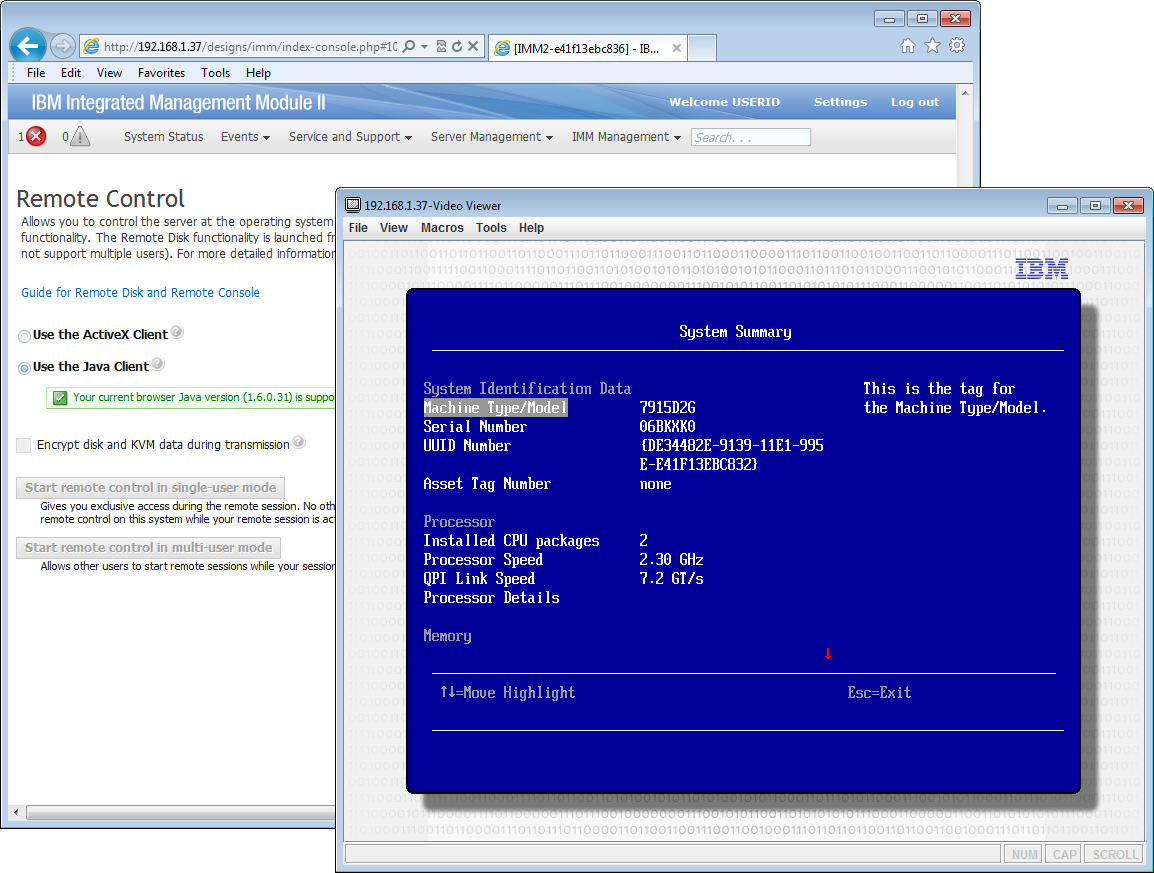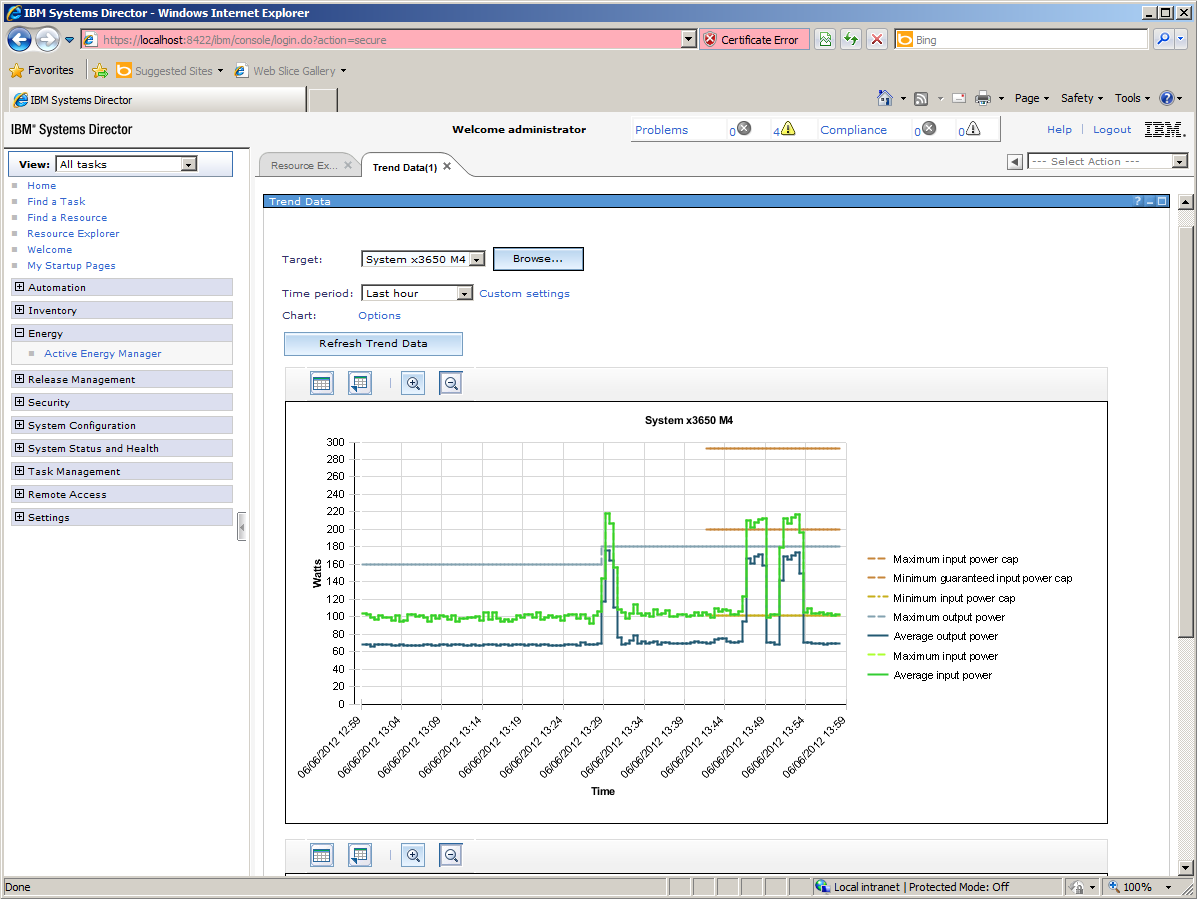IBM System x3650 M4 review
A 2U rack server, which comes with Intel Xeon processors and introduces IBM's pay-as-you-grow design.
SMBs and enterprises looking for a general purpose 2U rack server or a solid platform to run their critical apps on will find IBM’s new x3650 M4 a worthy candidate. Management features aren’t as sophisticated as those found in HP’s new ProLiants but it is good value and is scalable.

Our system included the IMM2 Advanced upgrade which activates the dedicated Gigabit port at the back. The browser interface sees a substantial redesign over the older IMM and provides a lot more information about critical components. However, it comes up short of Dell's iDRAC7 for features and is beaten soundly by HP's new iLO4 controller.

The new IMM2 management interface includes KVM-over-IP remote control with the Advanced upgrade
IBM System Director
IBM's System Director utility is much easier to use than Dell's Management Console or HP's Insight Control software. Designed to manage all network devices, it provides discovery, software deployment, inventory, file transfer and VNC based remote control tools. The Active Energy Manager plug-in talks to the IMM2 and provides power capping plus trend graphs of power consumption and system temperatures.
IBM is lagging behind in the deployment stakes as you still have to boot its servers with the ServerGuide DVD to get an OS on it. Dell did away with the need for this task three years ago and HP's Gen8 servers have the new Intelligent Provisioning feature.

IBM's System Director is easy to deploy and the Active Energy Manager plugin provides power monitoring graphs and trending
The server is virtualisation ready as its internal USB port uses a key to boot into VMware ESXi or vSphere 5. However, HP's DL380p Gen8 provides internal USB and SD card slots but Dell goes one step beyond as its PowerEdge R720 has dual internal SD card slots for hypervisor redundancy.
Get the ITPro daily newsletter
Sign up today and you will receive a free copy of our Future Focus 2025 report - the leading guidance on AI, cybersecurity and other IT challenges as per 700+ senior executives
Dave is an IT consultant and freelance journalist specialising in hands-on reviews of computer networking products covering all market sectors from small businesses to enterprises. Founder of Binary Testing Ltd – the UK’s premier independent network testing laboratory - Dave has over 45 years of experience in the IT industry.
Dave has produced many thousands of in-depth business networking product reviews from his lab which have been reproduced globally. Writing for ITPro and its sister title, PC Pro, he covers all areas of business IT infrastructure, including servers, storage, network security, data protection, cloud, infrastructure and services.
-
 Cleo attack victim list grows as Hertz confirms customer data stolen – and security experts say it won't be the last
Cleo attack victim list grows as Hertz confirms customer data stolen – and security experts say it won't be the lastNews Hertz has confirmed it suffered a data breach as a result of the Cleo zero-day vulnerability in late 2024, with the car rental giant warning that customer data was stolen.
By Ross Kelly Published
-
 Women show more team spirit when it comes to cybersecurity, yet they're still missing out on opportunities
Women show more team spirit when it comes to cybersecurity, yet they're still missing out on opportunitiesNews While they're more likely to believe that responsibility should be shared, women are less likely to get the necessary training
By Emma Woollacott Published
-
 OpenAI wants developers using its new GPT-4.1 models – but how do they compare to Claude and Gemini on coding tasks?
OpenAI wants developers using its new GPT-4.1 models – but how do they compare to Claude and Gemini on coding tasks?News OpenAI says its GPT-4.1 model family offers sizable improvements for coding, but tests show competitors still outperform it in key areas.
By Ross Kelly Published